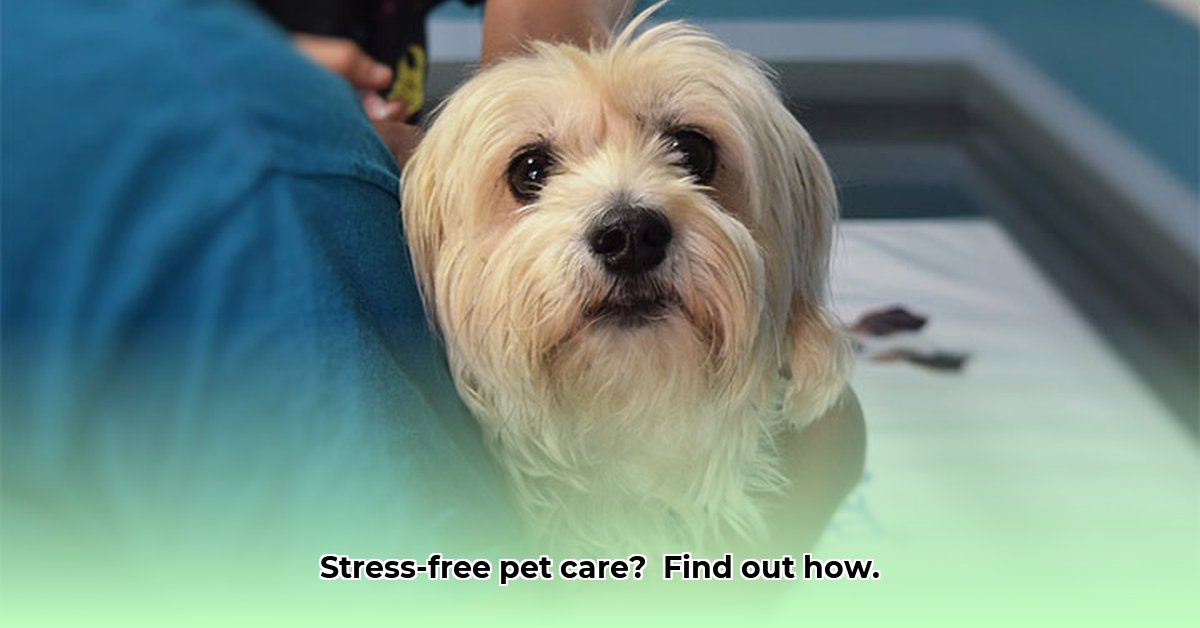
Eagle Rock Animal Emergency: Redefining Emergency Veterinary Care Through Curbside Service
Imagine this: your pet is unwell, and the need for emergency veterinary care is urgent. The usual anxieties associated with a trip to the veterinary clinic – crowded waiting rooms, anxious pets, and long waits – compound your stress. Eagle Rock Animal Emergency (ERAE) in Los Angeles offers a compelling alternative: a stress-free curbside service model that prioritizes both pet and owner well-being. This article examines ERAE's innovative approach, analyzes its benefits and challenges, and explores its implications for the future of emergency veterinary care. For other examples of innovative curbside service, see this other clinic.
How ERAE's Curbside Service Works:
ERAE's curbside service streamlines the emergency veterinary visit, minimizing stress for both pets and their owners. The process unfolds in five key steps:
Initial Contact: Contact ERAE by phone or simply drive up to the clinic. Staff will guide you through the process.
Curbside Assessment: A veterinary technician will meet you at your vehicle to conduct an initial assessment of your pet, gathering essential information about their condition.
In-Clinic Treatment: Your pet is gently transferred inside for a thorough examination and necessary treatment.
Real-Time Updates: ERAE provides regular updates on your pet's progress via phone or text, keeping you informed throughout the process.
Curbside Reunion: After treatment, you're reunited with your pet at your vehicle, receiving a complete explanation of the treatment and aftercare instructions.
This streamlined approach significantly reduces wait times and minimizes exposure to other animals, contributing to a calmer and more efficient experience. But what are the challenges associated with this approach?
Addressing the Challenges of Curbside Veterinary Care:
While ERAE's curbside model offers significant advantages, implementing and maintaining it presents challenges. Maintaining clear and consistent communication is paramount. Effective communication bridges the gap between the client and the veterinary team, ensuring that appropriate updates maintain a sense of awareness and trust. How does this work in a true emergency situation? ERAE prioritizes critical cases, making necessary exceptions to ensure immediate, essential care. This delicate balance between efficiency and personalized care is a testament to ERAE's commitment to compassionate veterinary service. Dr. Anya Sharma, DVM, Chief Veterinarian at ERAE, highlights this, stating, "While our curbside model promotes efficiency, it requires constant reassessment to adapt to immediate needs and maintain a high standard of care."
The Benefits and Drawbacks of Curbside Service:
The following table compares the benefits and potential drawbacks of ERAE's curbside service:
| Feature | Benefits | Potential Drawbacks |
|---|---|---|
| Reduced Pet Anxiety | Minimizes stress, leading to calmer exams and more accurate diagnoses. | Slight delay in the absolute initial assessment. |
| Improved Hygiene | Reduces cross-contamination between pets. | Requires rigorous cleaning and disinfection protocols. |
| Enhanced Efficiency | Streamlines workflow, increasing capacity. | Demands advanced communication systems and skilled staff. |
| Owner Convenience | Reduces wait times and overall stress for owners. | Limits immediate, in-person interaction with the vet. |
The Future of Emergency Veterinary Care: Innovation and Adaptation:
ERAE's curbside service provides a valuable case study in innovative veterinary care. While challenges exist, the clinic's experience highlights opportunities for improvement and innovation within the broader veterinary industry. Don't you agree that a decrease in stress for both pets and owners is worth exploring? The system's success at ERAE suggests that curbside models could become increasingly prevalent, offering a more efficient and less stressful experience for everyone involved. However, the system's limitations, particularly in situations demanding immediate, hands-on consultation, require continued research and adaptation. The future likely involves a blend of approaches tailored to individual needs.
Enhancing Curbside Communication: Best Practices and Technology
ERAE's success hinges on its communication protocols. Effective communication is essential to avoid misunderstandings and ensure a smooth client experience.
Streamlining Curbside Communication:
Pre-Appointment Communication: Clear instructions regarding arrival, parking, and the next steps are provided ahead of the visit.
Efficient Check-in: Prompt greeting, information collection, and a clear explanation of the process are crucial.
Real-Time Updates: Regular updates on the pet's condition are provided via phone or text. Video updates may also be used in appropriate cases.
Post-Visit Instructions: Comprehensive discharge instructions, including medication details and follow-up care, conclude the visit.
Feedback Mechanisms: Actively soliciting feedback ensures continuous improvement.
Technology's Role:
Technology enhances communication and efficiency. Secure messaging platforms, online client portals, and video conferencing improve the overall client experience.
Staff Training:
Extensive training emphasizes active listening, empathetic communication, and clear explanations.
By implementing these strategies, veterinary clinics can overcome the challenges of curbside service and create a positive experience for both pets and owners. The commitment to clear communication, technological integration, and well-trained staff ensures that the curbside model remains a viable and beneficial advancement in veterinary care. https://www.erae.vet/